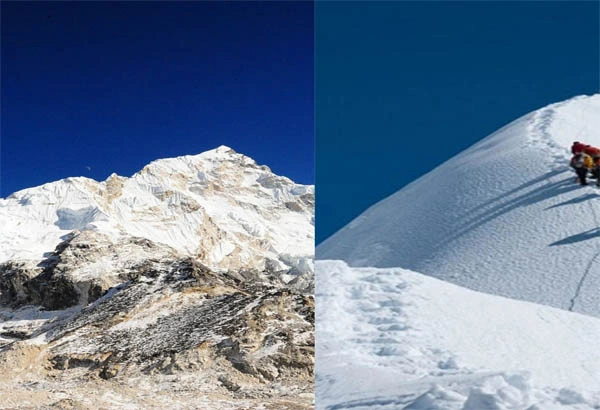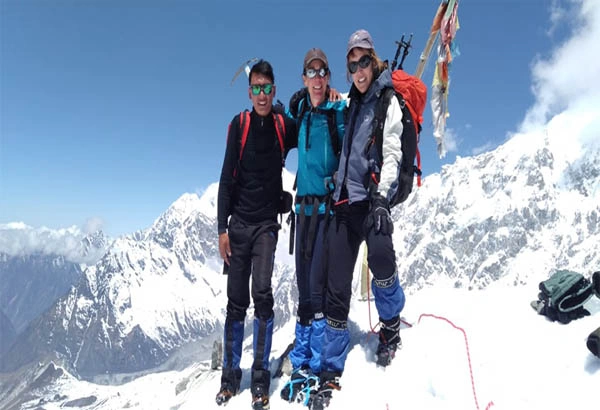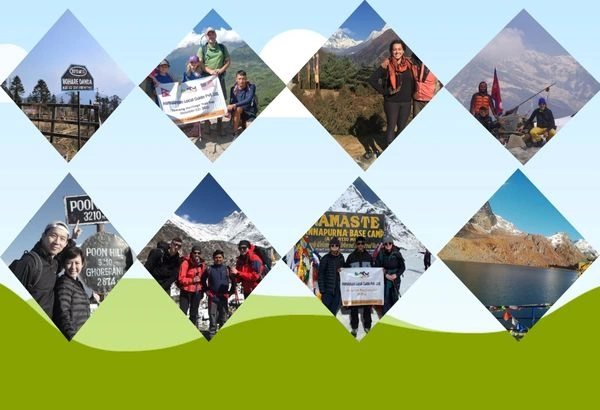The Annapurna Base Camp trek is absolutely one of the most famous trekking destinations in the Annapurna region. It is easily accessible and can be done in a week or 10 days. Also, the Langtang Valley trek is another best trekking destinations in the Langtang National Park region.
Both trekking destinations are gorgeous in their specific right and offer unique experiences exclusive to them. But in some ways, the Annapurna Base Camp and Langtang Valley trek are comparable. However, if you are planning for a trekking destination that can be done in a short period, both the Annapurna Base Camp Trek and Langtang Valley Trek check in the details information below.
However, for those who have time to trek on both treks in one travel is not possible for trekkers who have less than twelve days of breakdown. There are several things to take into explanation before choosing the ideal trekking destination for you and in this article, we will transmit all the information that is obligatory for you to make that choice.
Trekking Area: Annapurna Base Camp Trek Vs Langtang Valley Trek
The Annapurna region is part of the Annapurna Conservation Area Project, which has sections across the Myagdi, Kaski, Manang, and Lamjung District. However, the Annapurna Base Camp falls in the Kaski District. Both trekking routes are part of protected areas of Nepal that practice eco-tourism, which protects the National Park and conservation of natural and natural incomes.
The Langtang Valley is situated in the north-central of Kathmandu, and ABC is situated in the northwestern of Nepal. The Langtang Valley Trek falls in the Langtang National Park, which is the 1st National Park of Nepal.
How do I reach the Annapurna Base Camp and Langtang Valley Trek?
You have several options for the Annapurna Base Camp Trek. You can take a private car, Jeep, local bus, tourist bus, or flight to Pokhara from Kathmandu airport. A Pokhara city is the entryway of the Annapurna region trekking, such as the Annapurna Base Camp, Ghorepani Poon Hill, Mardi Himal, Khopra Danda, Mohare Danda etc.
If you take the bus, normally you have to drive 7 to 8 hours, depending on the road conditions and if you take a flight from Kathmandu to Pokhara takes around 30 minutes. A short drive from Pokhara to Nayapul and you can start your journey.
To reach the Langtang Valley, first, you need to drive from Kathmandu to Syabrubesi, by local bus or private jeep which takes about 7 to 8 Hours, depending on the road conditions. After getting to Syabrubesi, the next day morning you can start your trek.
Is both the Langtang Valley and Annapurna Base Camp trek are difficult route?
Factually, both trekking routes are considered moderate trek routes the Everest Base camp, Annapurna Circuit, and Manaslu Circuit trek. However, you need a good physical fitness level and mental preparations.
Both the Annapurna Base Camp trek and Langtang Valley trek are right for trekkers who wish to just begin to discover the typical culture of Gurungs, Magars, Tamangs, and Tibetans.
The trekking trail of Langtang Valley is completely untouched by bus road, walking on the pine and rhododendron forests, following along the Langtang Valley Riverside, ascending and descending. The highest point of the trek is Tserko Ri at a high elevation of 4993meters above sea level, which is the main peak season time, many trekkers climb the Tserko Ri or Kynajin Ri for the wide range of Himalayas and Langtang Valley with Sunrise views.
Similarly, the ABC trek has about the same as the ascending and descending trekking trails. One of the things that makes the Annapurna Base camp trek a bit more demanding than the Langtang trek.
You will be walking uphill and downhill the stone steps throughout the whole trek route and you will feel it on your legs and body. The main high point of the Annapurna Base camp is at an altitude of 4130 meters.
In comparison to the Manaslu Circuit trek or Everest Base Camp trek, both treks are extensively easier. So, one does have to take precautions concerning high altitude sickness and make both physical and mental preparations before beginning your trek.
Is the Langtang Valley trek Vs Annapurna Base Camp trek are safer route in Nepal?
Both treks are considered safe routes in Nepal. But there are several reasons causal the safety of a destination. However, high altitudes, natural disasters, weather conditions, and encounters with wildlife can pose a threat and danger to travelers.
During the Annapurna Base camp can be prone to avalanches, and the Langtang trek is dangerous in terms of landslides. It is erratic, but Himalayan black bears can be a possible encounter along the Langtang Valley trip.
For a solo trekker, the Annapurna Base Camp and Langtang Valley trek can done themselves, but sometimes can be avalanches, landslides, or trekking trails getting lost and missing. We recommend that you better to take a guide or porter team, then you will feel safe.
Duration of trekking: Annapurna Base Camp Vs Langtang Valley
The duration of trekking depends on the time frame or route you choose, but the short and sweet treks route for both areas are 8 to 10 days. There are numerous trekking routes for the Langtang Valley that you can take long days trek such as the Tamang Heritage and Langtang Valley trek, Langtang Gosaikunda & Helambu Trek, Gosaikunda Lake trek. These are all popular trekking routes in the Langtang National Park region.
One of the most popular treks to in the Annapurna area is the Ghorepani Poon Hill trek 7 days, Annapurna Base Camp trek 8 days, Annapurna Base Camp trek with Ghorepani Poon Hill, which can take about 10 to 12 days. But now bus roads are accessible in most places.
Weather conditions between the Langtang Valley Trek and Annapurna Base Camp Trek
Your trek experience severely depends on the type of weather at the place. Two factor seasons are considered good for trekking spring and autumn. Both trekking goals are at a comparable level of high altitude, making their temperatures similar. Spring and autumn offer a beautiful stable climate, with clear skies making them ideal for trekking in this region.
Monsoon/Summer, though, can be risky as it will be a rainy season, and many parts of Nepal will be prone to heavy flooding and landslides. Especially, in the Langtang region. Which has more landslides. Trekking trails will be muddy and slippery during the summer challenging and dangerous.
Constant in the Annapurna region, the level of rivers rises, hence it can be risky to trekking during the monsoon season.
Dissimilar to the popular idea, winter is essentially one of the ideal times for treks in the Himalayas. Apart from the bone-chilling cold, the views you get to observe are the magical ones you could forever get.
Meals and accommodations in the Annapurna and Langtang regions:
Annapurna region trekking offers supplementary choice on the menu, it is entirely a vegetarian trail. Due to religious beliefs, meat is not allowed from the Sinuwa Danda. While in the Langtang region trek, there used to be meat such as buff and Yak meets, however, it might not be fresh, because they must be brought from the city. We recommend that you eat a vegetable item, after the journey you can eat meat items in Syabrubesi or Kathmandu. All the meal items such as Dal Bhat Tarkari, Fried Noodles, vegetable fried potatoes, Macaroni, Spaghetti, MO: MO, Chowmin, Noodles soup, Fried rice, Pizza, Chapatti with Jam or honey, Pancakes, Oat porridge, Muesli, Tibetan and Gurung Bread are available on the menu.
Accommodation in the Annapurna and Langtang, for the mostly similar, you will find the best teahouses with one room with two or three beds including; a blanket, pillow, mattress, and sharing toilet and washroom.
Cultural differences between Annapurna and Langtang Trek:
In terms of culture, Annapurna and Langtang are typically diverse from one another. Langtang is mostly covered by the Tamang racial groups, who follow Tibetan Buddhism and Animism. It is extremely homogenous to humanity. They have their unique language, uniform, culture, and lifestyle.
During the trekking, you can witness their diverse way of life and what their everyday life consists of. The associates of Langtang are said to have migrated from Tibet a long time ago, consequently, their roots are etched in Tibetan practices.
In the meantime, the Annapurna area is more varied in culture, where people of diverse ethnic groups inhabit different parts with Gurung, Magar, and Thakali living being some of the well-known ones.
There is a following of both Buddhism and Hinduism. The influences of dissimilar castes and cultures make a collage of exciting colors and harmonies amid the communities.
Permits and TIMS card costs for the Langtang Valley VS Annapurna Base Camp:
Trekking in any part of Nepal that is labeled as a protected area requires a permit as the Langtang is part of the Langtang National Park and the ABC is part of the Annapurna Conservation Area project, getting a permit is mandatory. Also apart from the protected area entry permit, you will need to pay for the TIMS Card, otherwise known as the Trekkers Information Management System.
- Langtang National Park Permit costs USD 30 for foreign nationals and SAARC Nationals is USD 15. Below are the 10 Years free.
- Annapurna Conservation Area Project Permit Cost is USD 30 for Foreign Nationals and SAARC Nationals is 15 USD.
- TIMS Card Cost is USD 20.
Trip Cost for Annapurna Base Camp Trek Vs Langtang Valley Trek:
Both destinations are located in the high elevation area, where transport services are limited and complicated. This is why you will find it more costly than the city areas. But in comparison, for meals and accommodation, the Langtang Valley trek is significantly more reasonable and budget-friendly than the ABC trek.
The trip cost of both treks depends on the length or number of group sizes and services you take but on average, the Langtang trek costs around 690 USD per head, while the Annapurna Base Camp trek costs around 730 USD.




